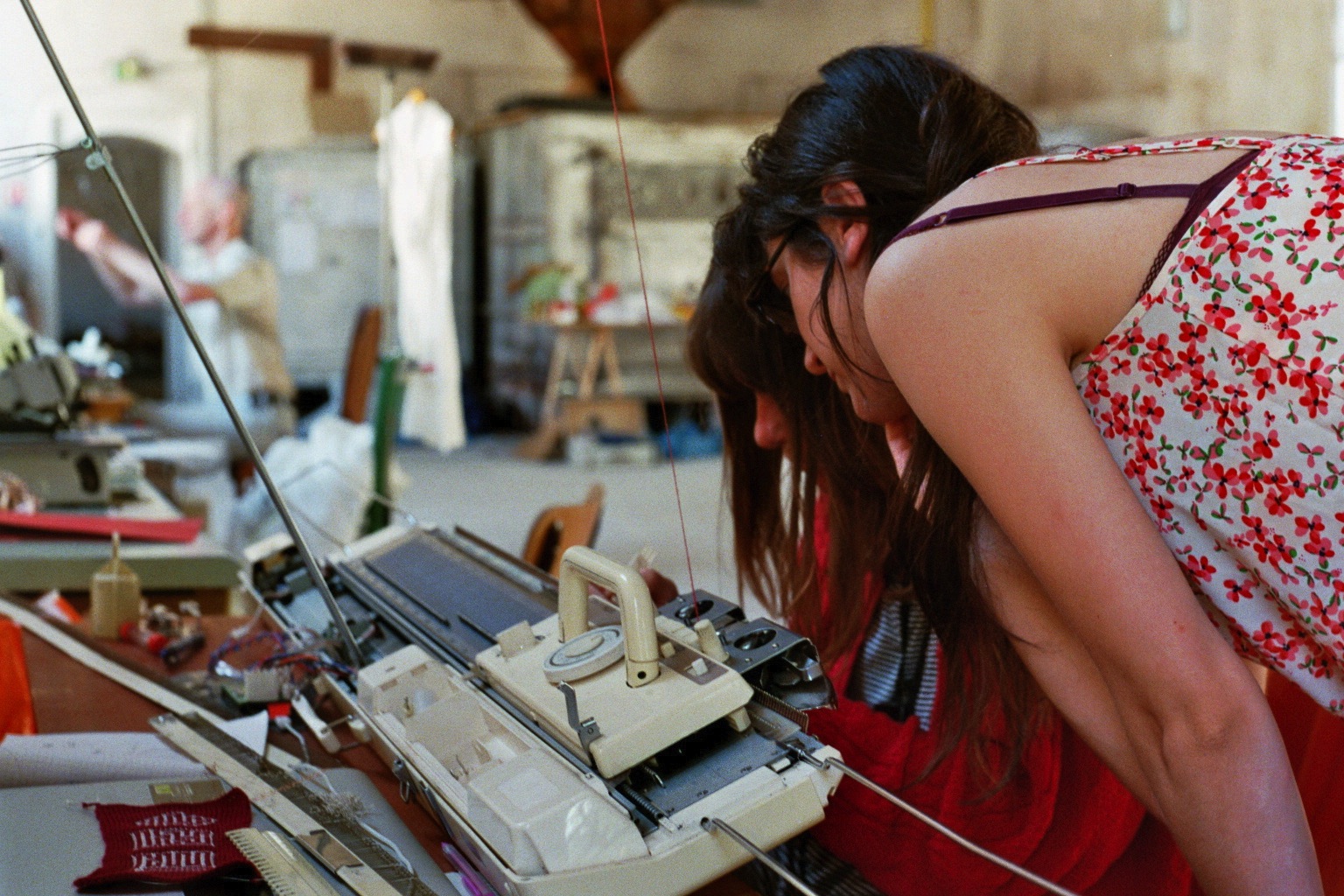This project explore how to hack knitting machines to knit sound files spectrogram. The Software translate sound into visual pattern and transmit each rows to the knitting machine. The Arduino Firmware & Software are fuly compatible with the AYAB Aruino extantion board (shield). You can purchase this electronic board from our shop (coming soon) or the one from AYAB.
- Git repository : https://github.com/eTextile/soundKnit
Since the 19th century, home knitting machines were a popular manufacturing tool which allowed knitters to produce rapidly knitted items to for household crafts. The possibility to use jacquard patterns started with the use of punched hole cards and began to be computerised in the 80's. The immediate and low raw material resource needed to produce a knitted surface is what make knitting machines mobile and accessible for experimenting and prototyping. Since the late 80's these knitting machines have stopped been produced. These last years hackers and makers have started to open up thises tools and found new ways to hack them by allowing the machines to be directly controlled by a modern computer. These hacked knitting machines became a sort of textile printer. Having a direct communication between digital tools and the knitting machine pushes the boundaries of traditional knitted patterns and gives the opportunity to think of new way's to design textile patterns.
- Hardware : We are using the AYAB Arduino Shieldv1.4
- Firmware : Arduino inspired by the soundKnit project
- Software : PureData patch : from sound frequency to visual spectrum (fft)
First of all you need to upload the Arduino soundKnit firmware to the Arduino board extended with the AYAB shield. Before flashing the Arduino firmware you will need to adjust the THRESHOLD value by flashing this calibration sketch :
Firmware/Calibration/endLignes/endLignes.ino
This sketch will print out the endStop sensor values into the Arduino serial monitor. The two endStop sensors must output a significant variation when passing the carriage front of the sensors. If so, you will be able to choose your THRESHOLD value under these maximum output values. The next step is to flash the soundKnit.ino firmware with the adjusted THRESHOLD values.
Firmware/soundKnit_V01/soundKnit_V01.ino
At this stage you still need to verify if the knitter stitches are well adjusted. Switch ON your knitting machine and plug in the Arduino to your laptop. Without starting any Software you should see activated stitches when passing the carriage from one side to other. The activated stitches must be the same if the carriage is left to right or right to left. If so you knitting machine is ready to go, if not you will need to adjust following variables:
#define START_POS_L value
#define START_POS_R value
The soundKnit.pd file is working with Pure Data Vanilla V0.5.x Pure Data is an open source software that offer an accessible visual programming environment. The soundKnit.pd patch analyse the sound frequencies using FFT algorithm to generate the textile pattern. Pure Data will need few extension library to run our Software :
- Comport (Serial communication)
- Gem (Graphic environment)
- Start PureData Vanilla
- Open the PureData patch : Software/PureData/soundKnit_V01.pd
- Verify that your Arduino board is plugged properly
- Click the first toggle (CHECK_DEVICES) of the PD patch to print all available port in the PD window
- Look for the available serial ports on the Pd window
- [comport]: available serial ports: ...
- Select the corresponding serial port number with the radio GUI
- Start the serial connection by clicking the next toggle (PORT_ON_OFF)
- Load your sound file by clicking (LOAD_FILE)
- Load the pattern visualisation by clicking the next toggle (SIMULATOR)
- ...
To start knitting, the carriage must be out of the sticheses on the left side. Each time you make a row you must pass the end ligne sensor. At the end of the row you will hear two bip. A bip when you pass the end ligne sensor end a bip to tell you when all stitch's positions are seted.
- 200 steacheses
- Two end lines sensors
- One encoder wheel with two sensors mounted on it :
- The first sensor is composed by two photointerrupter embedded into a single component (SHARP IA06). This double sensor is used to sens the direction of the carriage
- The second sensor is a single photo interrupter used for the phase (SHARP - GP1A52LRJ00F)
- For more technicals specifications you can read the service manual
This simple sketch allow you to send any black and white image [200 pixels width]
